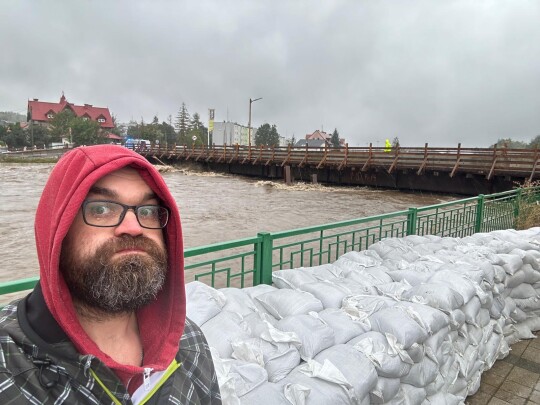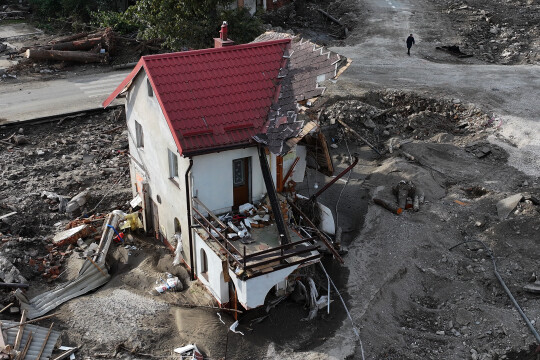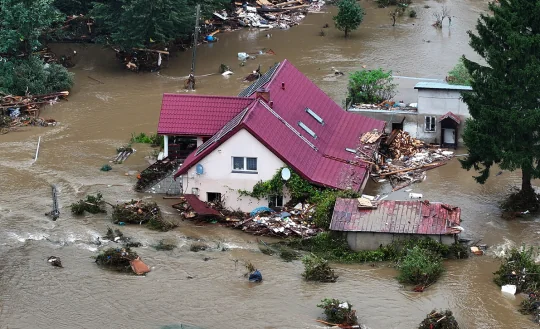By Dhyanesh Vaishnav
Doom on the horizon
Early September 2024. Monsoon has made its entry into Europe. In Opole, a city located on the Oder River in southern Poland, a group of local journalists are closely tracking the weather forecast. If proven accurate, a low-pressure cyclone caused by a large thermal contrast between warm Mediterranean air and cool air from the Alps would lead to heavy rainfall reminiscent of 1997, a year that saw the loss of more than 100 lives and earned itself the infamous monicker of the “Flood of the Millennium”.
Established in October 2022, O!Polska was created by a small group of news professionals who came together in protest against the takeover of the media house Polska Presse by a state-owned energy concern two years earlier. In its short lifespan, O!Polska’s investigative reports had earned it the title of the Local Newspaper of the Year in Poland.
The coming few weeks would test their journalistic grit as O!Polska faced its first major professional challenge – preparing for and covering what would prove to be the most devastating flood Poland had experienced in a quarter of a century. All this with a total newsroom strength of nine people; six journalists, two editors and one person doing desktop publishing.
By September 14, it was clear that Opole itself had been spared, but the neighbouring southwestern region was experiencing intense rainfall.
Method to the madness
The heavy rain soon led to signs of flooding. With a major national story unfolding in front of their eyes, the newsroom had to think on its feet.
Reacting to the situation, the leadership identified their two biggest challenges. While larger media outlets with more staff could send teams to multiple locations, O!Polska did not have that option. Out of their team of six reporters, two were abroad, leaving them with four reporters. Now was the time to tap into their extensive network of local sources. The second and more important challenge was to avoid overlapping efforts due to a lack of clear communication and allocation of tasks. “Publishing duplicate information on the website and social media would have been counterproductive,” says Piotr Guzik, Deputy Editor-in-Chief of O!Polska.
With clear instructions spelt out, Piotr left for Prudnik and Głuchołazy, two of the most affected areas. While one journalist was tasked with monitoring the situation from office, browsing Facebook and Twitter for updates from locals in potentially flooded areas, another focused on preparing content for the website and deciding what needed immediate publication on social media.
Piotr entered Prudnik to see the river breaching its banks. He pulled out his phone, captured the deluge and edited it on the spot. The video was uploaded on Youtube and social media immediately.
He then went to Głuchołazy, where he documented similar scenes of destructions near a bridge. Once again, the same process was followed. Visuals were shot on the phone, edited on the spot and uploaded. The bridge collapsed the next day.
To save time and effort and to be of most use for the community, the articles O!Polska published were compilations of smaller updates rather than standalone pieces.

Looking back at his team’s timely and accurate coverage proudly, Piotr emphasises the importance of collaboration. “Working with people in flooded areas also proved invaluable. Friends and volunteers provided first-hand information, photos and videos, which helped us deliver timely and accurate reports,” he says. Engaging with local people to help gather information, the team joined a WhatsApp group of residents from Lewin Brzeski, a city almost entirely submerged, so that residents could share videos and recount their experiences.
As long as the floods continued to ravage cities in the Oder basin, the day in the newsroom started at 5:00 AM and ended around midnight.
Aftermath and some key takeaways for newsrooms
As waters started to receed, after having reached as high as 1.5-1.8 metres above regular levels at the peak of the flood, the reporters saw heartwrenching sights: houses that had collapsed, animals that were dead or washed away by the rushing water and destroyed crops. While it is hard to estimate exact numbers, it is clear that millions of people were affected. Seven people lost their lives and the total estimated losses for residents and farmers in the region stands at approximately $2.5-3 billion.

Are there lessons to be learned from this experience that could help small, independent newsrooms prepare for crisis reporting? This first, according to Piotr, is the importance of following up after a crisis. O!Polska reporters continue to go back and report about the people still reeling from the aftermath of the floods, like this story about people living in Bodzanów and their Christmas.
Another key takeaway for independent outlets is preparation. “Have a plan in place for role division, anticipate extra working hours, and ensure your team is equipped to handle the stress,” Piotr says. The toll that crisis reporting can take on the minds and bodies of journalists can be hard to deal with in the moment and requires training. “Covering a crisis like this is not a 9-to-5 job. Long hours and fatigue made it hard to stay focused, recall previous events accurately, and avoid mistakes,” he says.
In times when newsrooms have fewer resources to invest in old-fashioned journalism, O!Polska’s coverage is a reminder that on-the-ground reporting can still reap rewards for news outlets. Having extensively reported the impact of the floods on people’s lives, O!Polska registered a surge in their audience reach. On Facebook, their followers grew from around 14,000 to 20,000 within a week during mid-September, the peak of the flooding.
O!Polska’s coverage created impact locally and at a national scale by bringing the plight of common people to the government’s attention. For example, after it published this story about how a foster family caring for 17 children lost their home, other outlets picked up the story leading to the state providing assistance to the family.
And most importantly, O!Polska’s journalism fulfilled its principal role of informing citizens so they were able to make informed choices and stay safe.
